Anchorage Airport Memories
Delaney Park Airstrip, Merrill Field, Anchorage International Airport, and Lake Hood. Anchorage aviation history.
The photo above is how Delaney Park looked when it was an airfield.
The oldest park in the city of Anchorage
wasn’t always a park
In around 1917, the citizens of Anchorage worked for free to clear the land for a firebreak to protect the mostly wooden buildings in the new city of Anchorage.
in the 1923 photo above, the firebreak became the first golf course in Anchorage.
A year later, the citizens of Anchorage cleared the land even more, and it became a 300-foot by 2000-foot landing field for aviation pioneer, Noel Wien.
Note:
The golf course was still in use when planes began landing and taking off from the new airstrip. But golfers were cautioned to “give the right of way, to aircraft.”
Wien’s first flight took place on June 4, 1924. And by the end of that month he had flown 170 passengers from the airstrip.
Wien also started the first Anchorage to Fairbanks flights from that airstrip.
By the way, the airstrip would become Delaney Park, the largest park in Anchorage. It was officially named on September 14 , 1971, after James Delaney, one of the first mayors in Anchorage.
BONUS
Want to know more?
Take a look at Anchorage Delaney Park as an Airstrip and discover.
Yes, You Can Share this Edition
You can share this edition of the Anchorage Memories Club with friends and family.
And when you do, they will be so happy that they will send you on a first-class flight around the world… well, it could happen.
Merrill Field, opened in 1932
Once Merrill Field opened, the Delaney Park Airstrip was no longer needed.
Merrill Field was the first official airport in Anchorage. And, until 1951, it was the only airport in Anchorage.
Construction of Merrill Field began in 1929 and was originally called Anchorage Aviation Field, then the Anchorage Municipal Airport. It was later named after Alaska aviation pioneer Russel Merrill.
During the 1930s, Merrill Field had so much air traffic that it became the most active civilian airport in the entire U.S.
NOTE:
The very first aviation beacon in what was, then, the Territory of Alaska, was located at Merrill Field.
BONUS
Click on the following link:
Take a look at the History of Merrill Field and enjoy.
DOUBLE BONUS
Click on the following link:
Read about Alaska pioneer aviator Russel Merrill and discover.
Anchorage Airport 1950s
Anchorage International Airport, now called Ted Stevens Anchorage International Airport, was first opened in 1953 when commercial aircraft were getting too big to land at Merrill Field.
Because of its location in the world, Anchorage International Airport became known as the “Air Crossroads of the World”.
It is now the 3rd busiest cargo airport in the world.
BONUS
Click on the following link:
Read more about The History of Ted Stevens Anchorage International Airport and enjoy.
Lake Hood Seaplane Base
Back in 1938, a channel was built between Lake Spenard and Lake Hood, and a gravel airstrip was built on the South side of lake Hood.
In the 1950s, the combined lakes were developed and enlarged into the Lake Hood Sea Plane Base.
A traffic control tower was added in 1954. Then, in the 1970s, the tower at Anchorage International Airport took over for Lake Hood air traffic.
Lake Hood has an average of 190 flights each day.
In the summer, planes take off and land on the lake using “pontoons.” In the winter, they use snow skis.
BONUS
Want to know more?
Take a look at the Lake Hood Seaplane Base and discover.
Did you fly out of land at any of the above airfields in Anchorage?
From Our North Stars (that’s you)
From The Matanuska Coal Fields Story (our Alaska Stories publication)
George commented:
“Very interesting article about the coal fields.
The Mention of Cap Lathrop as one of the original investors reminded me that the 4th Avenue Theater was heated with a coal fired furnace.
The maintenance man for the Hill Bldg. where I worked, also maintained the theater and would have to fire it up early enough to get the temperature up before the evening shows. This was in the 60s and 70s. I don't know if and when it might have been converted.”
Randall remembers:
“Many an evening in the 1970s (during the housing crunch) I sat with friends around their heavy metal stoves heated by the coal they collected along the tracks which ran from the mines north of Palmer.
My friends shared living spaces (in quonset huts), serving, as best could, as their homes, work spaces, etc.
Everyone scrambling to find a place to live and a place to keep warm.
To enjoy Alaska Stories (it’s free)
Take a look at Alaska Stories and get ready for Alaska history, adventure, and pioneers.
Connect with Mike and Mary
The smiling couple above are Mike and Mary of Anchorage Memories.
This picture was taken at Anchorage International Airport in 1970, as we were getting ready to board our Western Airlines flight at the beginning of our honeymoon. We had been married the day before… Boy, were we ever that young?
OK, please take your seat and buckle up as we prepare for landing.
Did you enjoy this look at Anchorage Airport Memories?
Did you arrive in Anchorage at Merrill Field? Have you ever flown out of Lake Hood?
We love hearing from our North Stars (that’s you).
You can also reply to this email, or you can Contact Us right here.
Until next time
Mike and Mary
The Anchorage Memories Club


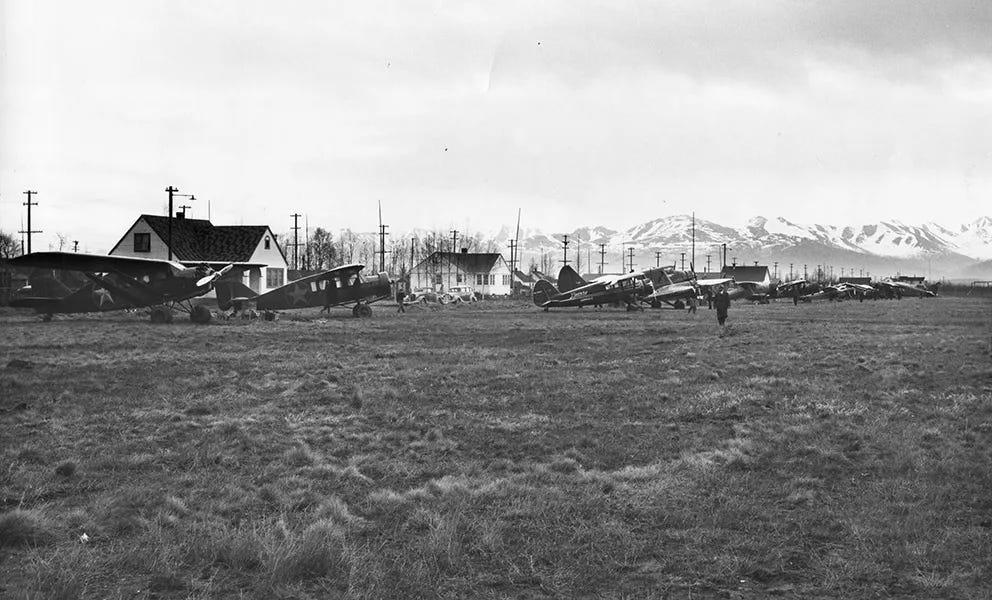
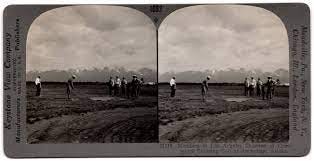
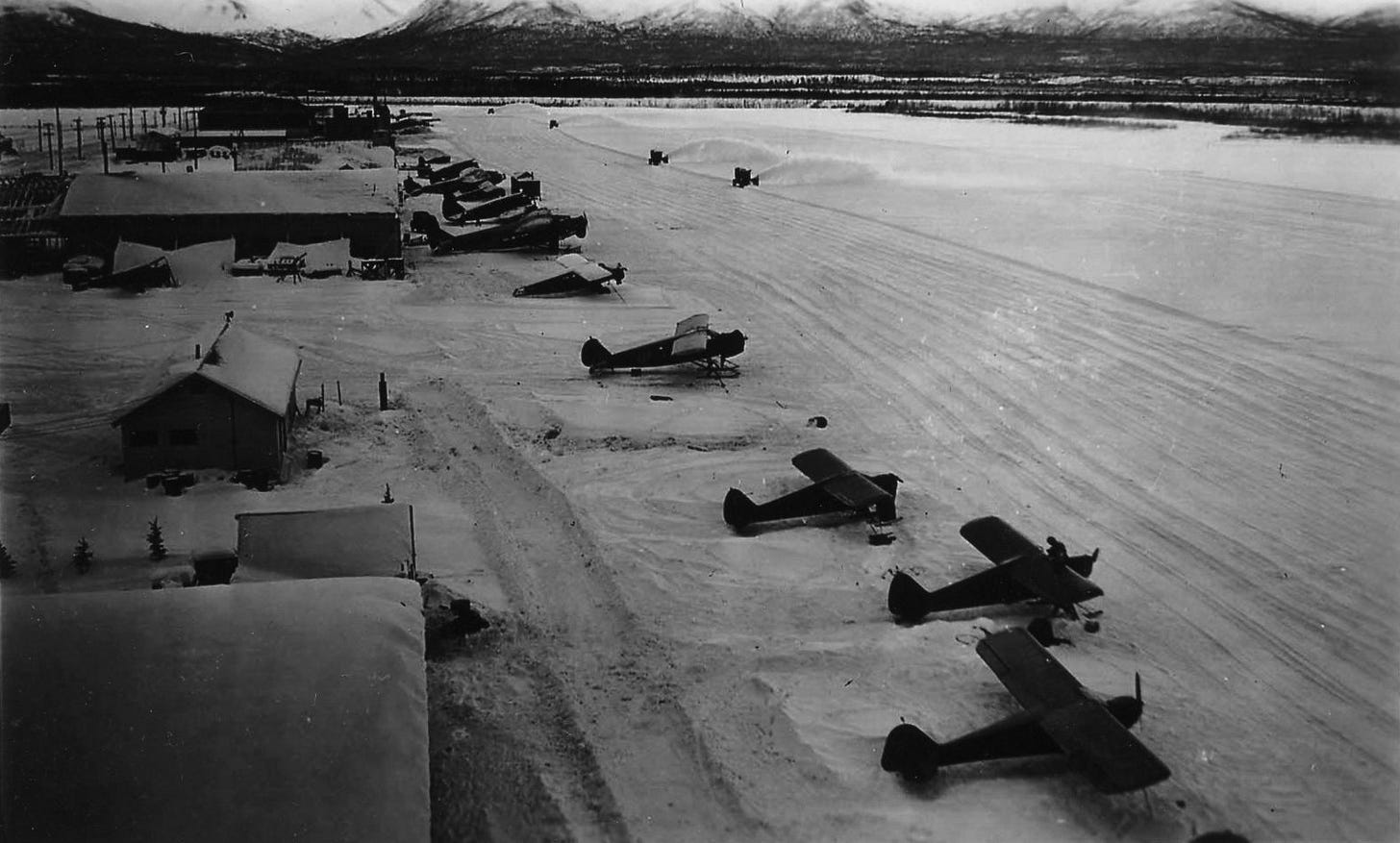
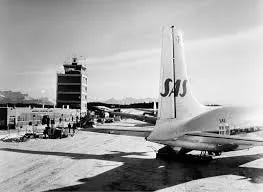
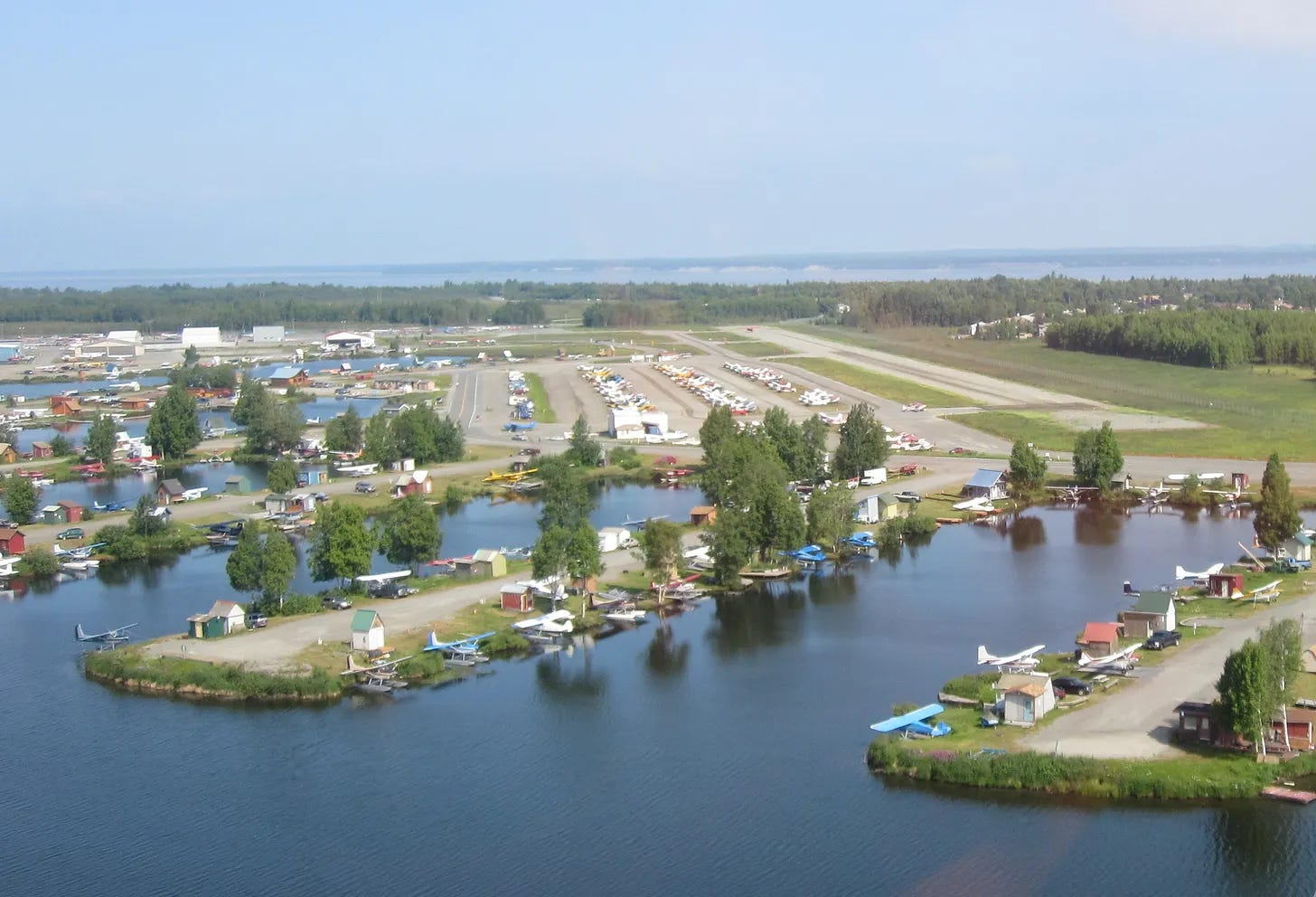


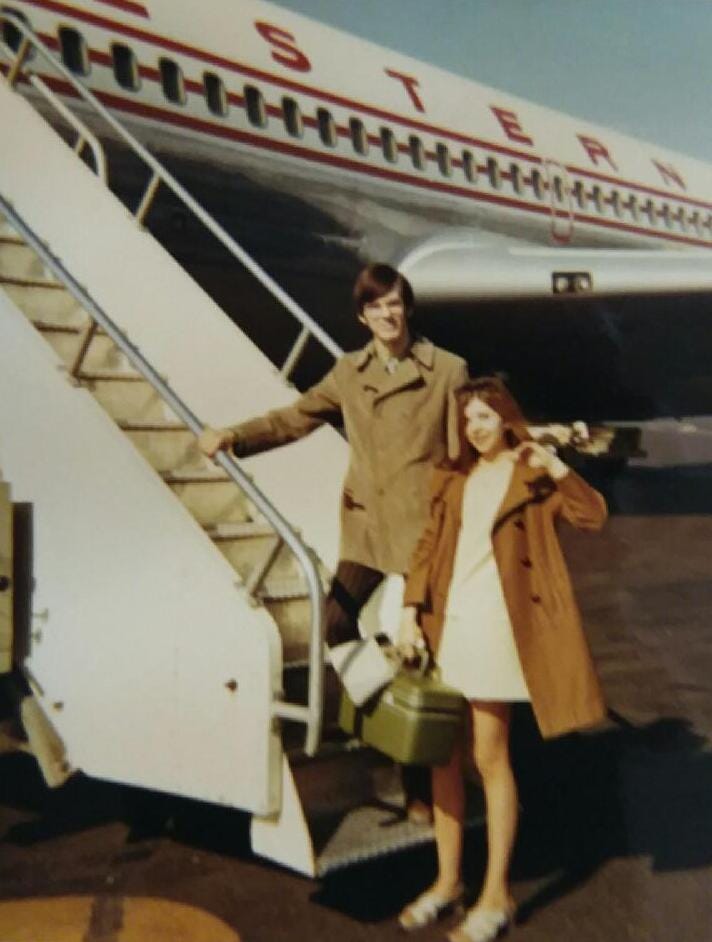
When we swam in Lake Spenard as teenagers, we "floated" the "little waves" created by the planes taking off and landing on the canal from Lake Hood.
The photo labeled as the park strip airfield in 1924 was taken some years after 1924. The strip was cleared by Anchorage townsfolk in May of 1923 with the hope of seeing airplanes land one day. (They had to wait an entire year.) The only airplane to be seen on that airstrip in 1924 was Noel Wien's J-1 Standard when he and his mechanic Bill Younkers were on their way to Fairbanks, and that was only in June and early July. Wien and Younkers took off for Fairbanks on July 7 — a miraculous flight, considering they didn't know where Fairbanks was, they only had one shot to get it right (and they only did it by following the gleaming rails of the Alaska Railroad, completed just one year earlier).